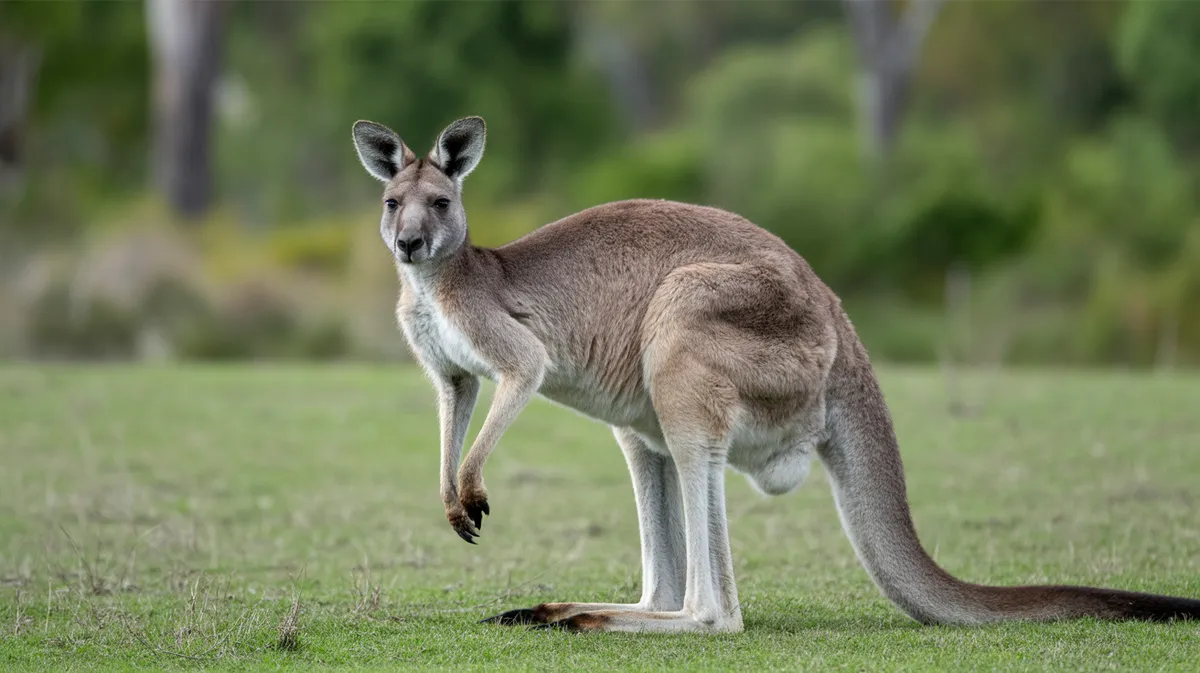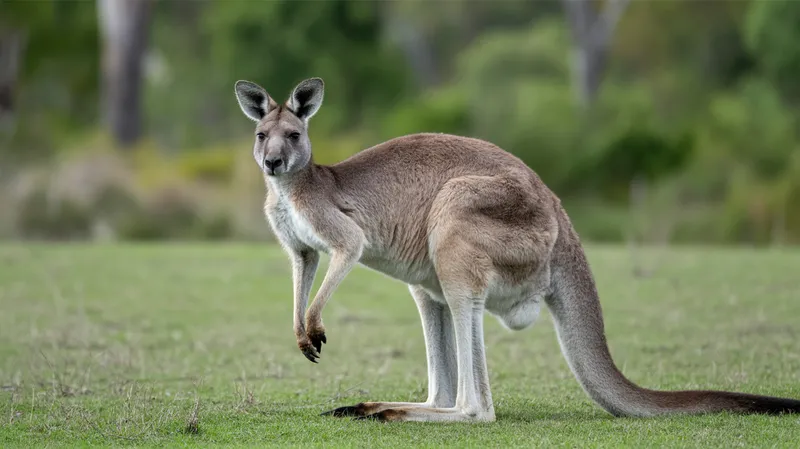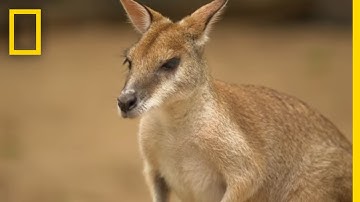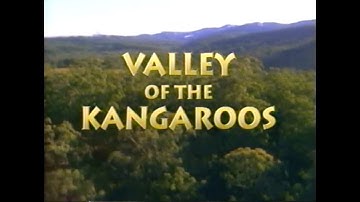
Eastern Gray Kangaroo
Macropus giganteus

Meet the Eastern Gray Kangaroo
The Eastern Gray Kangaroo is one of Australia’s most iconic marsupials, known for its powerful hind legs and large, muscular tail. It is the largest kangaroo species found on the eastern side of Australia, inhabiting open woodlands, forests, and grasslands. These kangaroos are highly social and form groups called mobs, which provide protection against predators. Their soft gray fur, keen senses, and remarkable hopping ability help them thrive in diverse habitats across eastern and southeastern Australia.
Classification
Mammal
Habitat
Open woodland, forest, and grassland
Diet
Herbivore
Lifespan
8-15 years
Conservation
Least Concern
Weight
17–66 kg (37–146 lbs)
📖Fascinating Facts
Impressive Leaps
Eastern Gray Kangaroos can leap distances of up to 9 meters (30 feet) in a single bound, using their strong hind legs.
Joey Development
A newborn kangaroo, called a joey, is only about the size of a jellybean and develops inside its mother’s pouch for up to 8 months.
Grazing Habits
These kangaroos are primarily grazers, feeding mainly on grasses, but will also eat leaves and shoots when available.
📋Detailed Description
The Eastern Gray Kangaroo (Macropus giganteus) is a large, robust marsupial endemic to eastern and southeastern Australia, including Tasmania. Adult males, known as 'boomers,' can reach a head-body length of 1.3 meters, with tails up to 1 meter long, and weigh between 50–66 kg, while females ('flyers') are smaller, averaging 32 kg. Their dense, soft fur is typically silver-gray, with paler underparts and a finely haired, muscular tail used for balance and support. Eastern Gray Kangaroos possess powerful hind limbs adapted for saltatory (hopping) locomotion, allowing them to travel at speeds up to 56 km/h and leap distances of over 9 meters in a single bound. Their forelimbs are much smaller and used for grooming, feeding, and combat. The species exhibits a highly social structure, forming loose groups called 'mobs' that can range from a few individuals to over 100, providing safety in numbers and facilitating social interactions. Eastern Grays are primarily crepuscular, being most active at dawn and dusk, and spend much of the day resting in shade. Their large, forward-facing ears provide acute hearing, and their wide-set eyes offer a broad field of vision, both crucial for predator detection. The species is herbivorous, feeding mainly on grasses and occasionally on shrubs and herbs, with a specialized digestive system for fermenting fibrous plant material. Females possess a forward-opening pouch where the single, altricial joey develops post-birth, a hallmark of marsupial reproduction. Eastern Gray Kangaroos are ecologically significant grazers, influencing plant community dynamics and nutrient cycling within their habitats.
💡 Did you know?
The Eastern Gray Kangaroo is so prevalent in some regions that its population sometimes exceeds that of humans in Australia.
🔬Research & Sources
Wikipedia Summary
The eastern grey kangaroo is a marsupial found in the eastern third of Australia, with a population of several million. Although a large M. giganteus kangaroo male can typically weigh up to 69 kg (152 lb) and have a length of well over 2 m, the scientific name is misleading as the red kangaroo of the semi-arid inland is larger, weighing up to 90 kg (200 lb).
Last Modified: 5/23/2025
🎭Behavior & Social Structure
Eastern Gray Kangaroos are predominantly grazers, feeding in open areas during low-light periods to avoid heat stress and predation. They exhibit a fission-fusion social system, with group composition changing frequently. Mobs are usually led by dominant males, who compete for access to females through ritualized boxing and kicking contests. Social grooming, or allogrooming, is common and reinforces bonds within the group. Kangaroos communicate through a range of vocalizations, including clucks, coughs, and growls, as well as through foot thumping to warn of danger. Feeding is selective, with individuals preferring young, nutrient-rich grasses when available. During the hottest parts of the day, kangaroos rest in shade, often licking their forearms to promote evaporative cooling. They are highly vigilant, with sentinels often scanning for threats such as dingoes, wedge-tailed eagles, or human disturbance. Movement between feeding and resting sites is typically conducted in single file, and individuals maintain a defined personal space to minimize aggression.
👶Reproduction & Life Cycle
Eastern Gray Kangaroos breed year-round, but births peak in summer and early autumn, coinciding with optimal forage availability. Males engage in intense competition for mating rights, with dominant individuals securing most copulations. After a gestation period of approximately 36 days, the tiny, underdeveloped joey (less than 1 gram) crawls unaided into the mother's pouch, where it attaches to a teat and continues development for about 9 months. After leaving the pouch, the young continues to suckle and may re-enter the pouch for safety until fully weaned at 18–20 months. Females exhibit embryonic diapause, allowing them to pause the development of a new embryo until the pouch is vacated, thus maximizing reproductive output. Maternal care is extensive, with mothers fiercely defending their young from threats. Sexual maturity is reached at 17–24 months for females and 20–36 months for males.
🛡️Adaptations & Survival
Eastern Gray Kangaroos possess numerous adaptations for survival in variable Australian environments. Their elongated hind limbs and elastic tendons store and release energy efficiently during hopping, minimizing metabolic costs over long distances. The large tail acts as a counterbalance and support during locomotion and when sitting. Their specialized dentition, with ever-growing molars, allows them to process tough grasses, while their chambered stomach facilitates microbial fermentation of cellulose. Behavioral thermoregulation, such as licking forearms and seeking shade, helps them cope with high temperatures. The ability to delay embryonic development (embryonic diapause) ensures reproductive success even in fluctuating environmental conditions. Acute hearing and vision, along with cryptic coloration, aid in predator avoidance. Social living enhances vigilance and reduces individual predation risk.
📚Research Sources
🎨Cultural Significance
The Eastern Gray Kangaroo is a prominent symbol of Australia, featured on the national coat of arms, currency, and in numerous cultural representations. It holds significant importance in Aboriginal mythology and Dreamtime stories, where it is often depicted as a totemic animal and a provider of food and materials. Traditional uses included hunting for meat, hides, and sinew, with sustainable practices embedded in Indigenous culture. Today, kangaroos are central to Australian ecotourism and wildlife conservation education, but also the subject of debate regarding management and commercial harvesting. Their iconic status contributes to national identity and international perceptions of Australian wildlife.
🔬Recent Research & Discoveries
Recent research on Eastern Gray Kangaroos has focused on their population genetics, revealing high gene flow across their range and limited genetic differentiation, which supports their adaptability to diverse habitats. Studies on their locomotion have provided insights into the biomechanics of hopping and energy efficiency, with implications for robotics and prosthetics. Long-term ecological monitoring has examined their role as ecosystem engineers, influencing plant communities and soil health. Research into reproductive physiology has elucidated mechanisms of embryonic diapause and maternal investment strategies. Ongoing studies are assessing the impacts of climate change on distribution, health, and population dynamics, as well as the effects of urbanization and human-wildlife conflict.
🎥Wildlife Videos

Eastern Gray Kangaroo | Amazing Animals
About Amazing Animals: Amazing Animals is a series that profiles a different animal in each episode. These short, one-minute ...
Nat Geo Kids

Wildlife | Episode 3: Kangaroos - Kings of the Outback | Free Documentary Nature
Wildlife - Episode 3: Kangaroos - Kings of the Outback | Wildlife Documentary Watch 'Wildlife - Episode 4: World's Largest Land ...
Free Documentary - Nature

The Kangaroo is the World's Largest Hopping Animal | National Geographic
#NationalGeographic #Kangaroos #Marsupials About National Geographic: National Geographic is the world's premium ...
National Geographic

The Dramatic Lives of Kangaroos | Secret Life of the Kangaroo 102
Eastern Grey Kangaroos rule the grasslands of eastern Australia—and this three-part series dives deep into their dramatic lives.
Love Nature

Exploring The Life of Kangaroos In The Nature (Wild Documentary)
Enjoy the new wild documentary exploring the life of kangaroos. Learn more about the kangaroos: The kangaroo is a marsupial ...
Great Documentaries 2

National Geographic: Valley of the Kangaroos (1992)
I do not maintain copyright and claim no rights to this video* This video is for educational and historical use only. Narrated by Jane ...
Rando Retro Video
🌍Habitat Information
The Eastern Gray Kangaroo typically inhabits Open woodland, forest, and grassland environments. Eastern Gray Kangaroos have adapted to their environments with specialized features and behaviors.
Primary Habitat:
Open woodland, forest, and grassland
More detailed habitat information will be available soon.
🛡️Conservation Status
The Eastern Gray Kangaroo is currently classified as Least Concern. Conservation efforts are crucial for preserving this species for future generations.
Common Threats:
- 🏠Habitat loss and fragmentation
- 🌡️Climate change impacts
- 🎯Hunting and poaching
- 🏭Human-wildlife conflict
⚠️Threats & Conservation Challenges
While classified as Least Concern by the IUCN, Eastern Gray Kangaroos face several threats, including habitat loss due to agricultural expansion, urban development, and fencing, which restricts movement and access to resources. Road mortality is significant, particularly in peri-urban areas. They are also subject to legal culling and commercial harvesting for meat and leather, regulated to maintain population balance and reduce conflict with agriculture. Climate change poses emerging challenges, potentially altering grassland productivity and water availability. Disease outbreaks, such as toxoplasmosis and parasitic infections, can impact local populations. Despite these pressures, the species remains abundant, with estimates exceeding 10 million individuals, and populations are stable or increasing in many regions due to land clearing creating favorable grazing habitats.
🔬Scientific Classification
Scientific Name
Macropus giganteus
Classification Hierarchy
🔍 About Taxonomic Classification
Taxonomic classification is a hierarchical system used by scientists to classify and organize living organisms based on shared characteristics and evolutionary relationships.
The system moves from broad categories (Kingdom) to increasingly specific ones, with each animal's scientific name typically consisting of its Genus and species.
📝Community Notes
Share your observations and insights about the Eastern Gray Kangaroo with our community of wildlife enthusiasts.
Join Our Community
Sign in to share your observations and connect with fellow wildlife enthusiasts.
Sign In to ContributeNo community notes yet
Be the first to share your observations about the Eastern Gray Kangaroo!
Explore Eastern Gray Kangaroo
Select a tab above to learn more about this amazing animal.
📸Photo Gallery
No photos available for this animal yet.
🌟Discover More Wildlife
Continue your journey of discovery with more fascinating animals from our database
